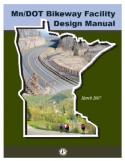Thu 13 Dec 2007
MnDot’s Manuals on Bikeways
Posted by admin under 76th Street Streetscape
Comments Off on MnDot’s Manuals on Bikeways
 A couple of interesting PDFs on the Technical Guidance for Bikeways put out by Mn/DOT
A couple of interesting PDFs on the Technical Guidance for Bikeways put out by Mn/DOT
Mn/DOT Bikeways Facility Design Manual
MnDOT Bicycle Modal Plan
From MnDOT Bicycle Modal Plan
3-2.0
Shared use paths, greenways, and state trails must be designed for users other than bicyclists. The design should take into account others on shared use paths such as inline skaters, adult tricycles, bicycle trailers, recumbent bicyclists, and wheelchair users. The dimensions and operational characteristics of bicyclists are important, other user types that are allowed to share the same space as bicyclists should be integrated into the initial planning stages and the design and selection of a bikeway type.
4-2.1 Consideration of Geometric and Operation Factors
Intersections and Driveways
Intersections and driveways are roadway features that require extra consideration and care as they relate to bikeways, and provide opportunities as well as potential difficulties for designers of bikeways. Since bicyclists generally want to reach the same destinations as motorists, these features provide access to those destinations. They also present potential locations for conflicts between motor vehicles and bicycles. Most bicycle crashes with motor vehicles occur at
intersections.
4-3.3 Standard Bicycle Lanes
A bicycle lane is a portion of a roadway designated by striping, signing, and pavement markings for the preferential or exclusive use of bicycles. These one-way bicycle facilities are appropriate for roads with an urban (curb and gutter) cross section. Bicycle lanes carry bicycle traffic in the same direction as adjacent motor vehicle traffic.
No Responses to “ MnDot’s Manuals on Bikeways ”
Sorry, comments for this entry are closed at this time.